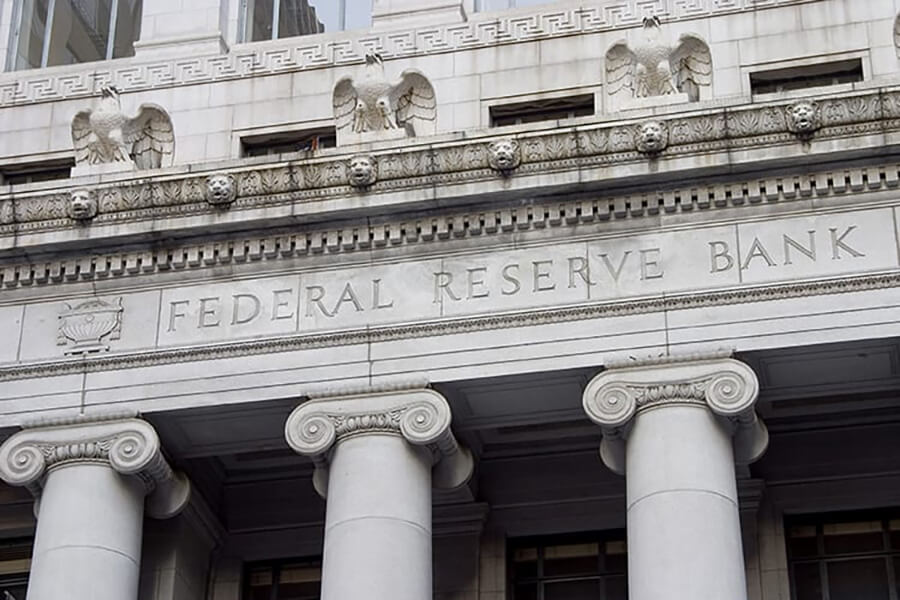In the world of finance, history has a peculiar way of repeating itself. The recent FTX scandal shook the cryptocurrency industry, revealing the vulnerability and potential for manipulation within the financial system. But what if I told you that a strikingly similar scenario is playing out on a much larger scale, involving major banks and the Federal Reserve? In this article, I will delve into the eerie similarities between the FTX saga and the current financial crisis, examining the role of interest rates, market manipulation, and the critical difference that lies in who makes and enforces the laws. Let’s uncover the truth behind these financial déjà vus and discuss what can be done to prevent future crises.
The Beginning of the Financial Crisis
The Fed Raises Interest Rates
Although they may not be eager to confess it, history seems to be repeating itself. Major banks are beginning to fail, and people are starting to realize the gravity of the situation. The financial crisis, however, didn’t suddenly emerge last week. It can be traced back to March 16th, 2022, when the Federal Reserve initiated the first interest rate hike in over three years, lifting them from zero. This change spelled trouble for those heavily reliant on the debt system, who had become accustomed to the easy money.
The Domino Effect on Levered Players
As interest rates rise, credit availability tightens. This is Warren Buffet’s renowned analogy of the receding tide that reveals those who are swimming without clothes. It seems that everyone was taking a risky dip, and FTX was among them.
The Fall of FTX
FTX’s Bankruptcy in November 2022
In this new financial landscape, FTX managed to stay afloat for just eight more months before succumbing to bankruptcy on November 11th, 2022. The exchange’s users were unaware that FTX had recklessly gambled with their funds, replacing them with worthless collateral—a token that FTX itself had created. As long as no one discovered the truth, all was well.
The Illusion of Value and Fraudulent Activities: The Role of Alameda Research
The primary goal was to maintain the false sense of value for the collateral. That’s where Sam Bankman-Fried’s (SBF) personal trading firm, Alameda Research, stepped in. As FTX drained user funds and replaced them with newly minted tokens, Alameda Research fabricated a market to inflate those tokens’ value, effectively trading them back and forth amongst themselves. Unfortunately, this scheme was unsustainable. No amount of manipulation could save the day once people began selling and withdrawing their funds. The money had vanished. This blatant act of fraud led to a disheveled SBF facing 115 years in prison.
The Present Day: Banks and the Federal Reserve
Banks Replacing Deposits with US Treasuries
Fast forward four months, and the tide has receded even further. The same narrative is unfolding.
Unbeknownst to their clients, banks have been substituting their deposits with a token that the government prints—US Treasuries. As long as no one notices, everything seems fine. The challenge lies in maintaining the illusion of value.
The Fed’s Role in Maintaining the Illusion of Value
This is where the Federal Reserve comes into play. They have been absorbing these tokens and expanding their balance sheet by $354 billion in just a few days. This action effectively undoes more than six months of quantitative tightening. Essentially, the Fed and its member banks are trading amongst themselves, keeping the illusion of value alive.
The Critical Difference: Who Makes the Law
However, there is one crucial distinction between these two scenarios. While Sam Bankman-Fried broke the law with his fraudulent activities, the Federal Reserve and the US government are the ones who make and enforce the laws. This fact allows them to seemingly “get away” with their actions, as they are the ones dictating the rules of the game.
Final Thoughts
The FTX debacle and the current financial crisis share striking similarities. In both cases, institutions were manipulating the market to maintain an illusion of value, and once that illusion shattered, the consequences were disastrous. The critical difference, however, is that while FTX’s actions were fraudulent and illegal, the Federal Reserve and the US government are operating within the framework of the law. This difference highlights the need for increased transparency and accountability in our financial system, to ensure that those who hold power are acting in the best interests of the people.
FAQs
- What was the role of the Federal Reserve in the FTX scandal?
The Federal Reserve did not play a direct role in the FTX scandal. The connection between the two lies in their similar methods of maintaining an illusion of value in the financial market. - How did Alameda Research contribute to the FTX fraud?
Alameda Research, owned by Sam Bankman-Fried, created a fake market and inflated the value of the worthless tokens issued by FTX. This manipulation allowed FTX to maintain the illusion of value for their collateral. - Why is the Federal Reserve able to “get away” with their actions?
The Federal Reserve can seemingly “get away” with their actions because they are part of the US government, which makes and enforces the laws. Their actions, although similar to FTX’s, are legal within the existing framework. - What can be done to prevent similar financial crises in the future?
To prevent similar crises, increased transparency and accountability in the financial system are necessary. Ensuring that those in power are acting in the best interests of the people and not manipulating the market for their gain is crucial. - How does the current financial crisis relate to the FTX scandal?
Both the current financial crisis and the FTX scandal involve the manipulation of the market to maintain an illusion of value. Once this illusion was shattered, the consequences were disastrous, revealing the vulnerability of our financial system.
